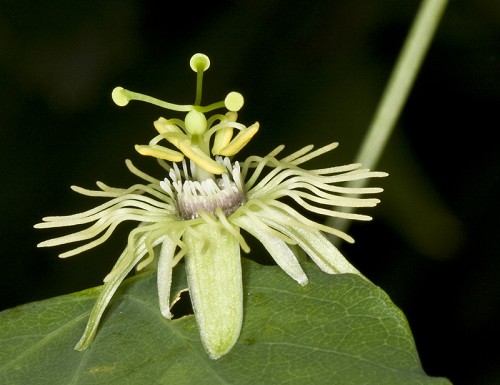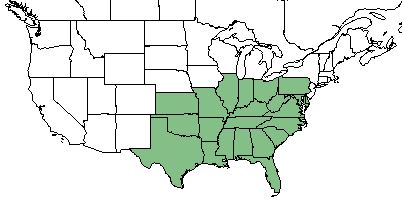Difference between revisions of "Passiflora lutea"
(→Description) |
|||
| Line 24: | Line 24: | ||
==Description== | ==Description== | ||
| − | ''P. lutea'' is a perennial forb/ | + | ''P. lutea'' is a perennial forb/herb/vine of the Passifloraceae family that is native to North America. <ref name= "USDA"> [https://plants.usda.gov/core/profile?symbol=CEAM USDA Plant Database]</ref> |
<!-- Basic life history facts such as annual/perrenial, monoecious/dioecious, root morphology, seed type, etc. --> | <!-- Basic life history facts such as annual/perrenial, monoecious/dioecious, root morphology, seed type, etc. --> | ||
Revision as of 19:52, 6 June 2018
Common names: Yellow passionflower [1]
| Passiflora lutea | |
|---|---|

| |
| Photo by John Gwaltney hosted at Southeastern Flora.com | |
| Scientific classification | |
| Kingdom: | Plantae |
| Division: | Magnoliophyta - Flowering plants |
| Class: | Magnoliopsida - Dicots |
| Order: | Violales |
| Family: | Passifloraceae |
| Genus: | Passiflora |
| Species: | P. lutea |
| Binomial name | |
| Passiflora lutea L. | |

| |
| Natural range of Passiflora lutea from USDA NRCS Plants Database. | |
Contents
Taxonomic Notes
Synonym: none
Variety: glabriflora (Fernald)
Description
P. lutea is a perennial forb/herb/vine of the Passifloraceae family that is native to North America. [1]
Distribution
P. lutea is found throughout the southeastern United States; from Florida north to Pennsylvania, and west to Texas and Kansas. [1]
Ecology
Habitat
P. lutea has little tolerance for drought conditions and a low tolerance for fire. It is extremely tolerant of shade. [1]
Common environments for P. lutea include woodlands, forests, thickets, and maritime forests. [2]
Specimens have been recovered from edges of maritime hammocks, disturbed roadsides near woodlands, on bases of slopes, and pine-oak woodlands. [3]
Phenology
June and July are the common flowering months for P lutea. [4]
Use by animals
Birds will use the species for food. [1]
Conservation and Management
P. lutea is considered a weed in Illinois but is labeled as endangered in Pennsylvania. [1]
Cultivation and restoration
Photo Gallery
References and notes
- ↑ 1.0 1.1 1.2 1.3 1.4 1.5 USDA Plant Database
- ↑ Weakley, A. S. (2015). Flora of the Southern and Mid-Atlantic States. Chapel Hill, NC, University of North Carolina Herbarium.
- ↑ URL: http://herbarium.bio.fsu.edu. Last accessed: June 2018. Collectors: Loran C. Anderson, States and counties: Florida (Wakulla, Leon, Liberty)
- ↑ Pan Flora